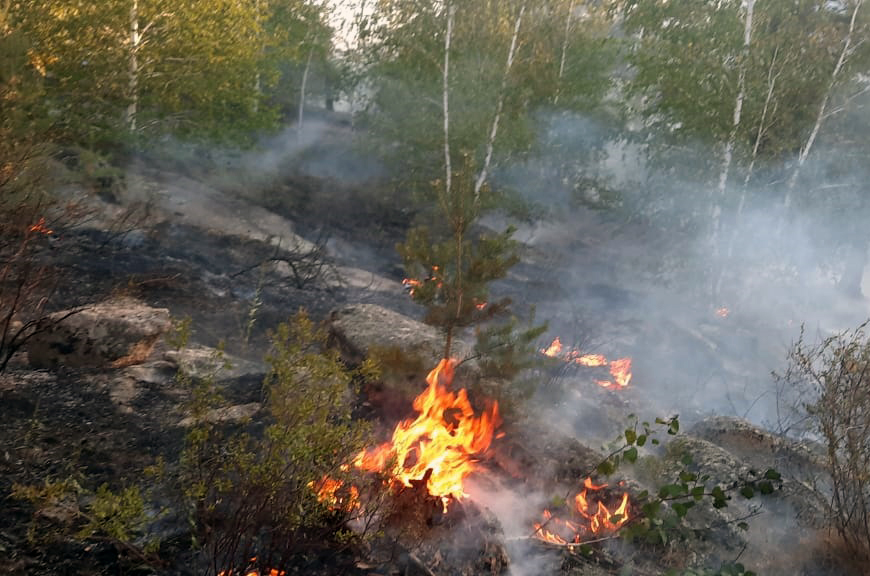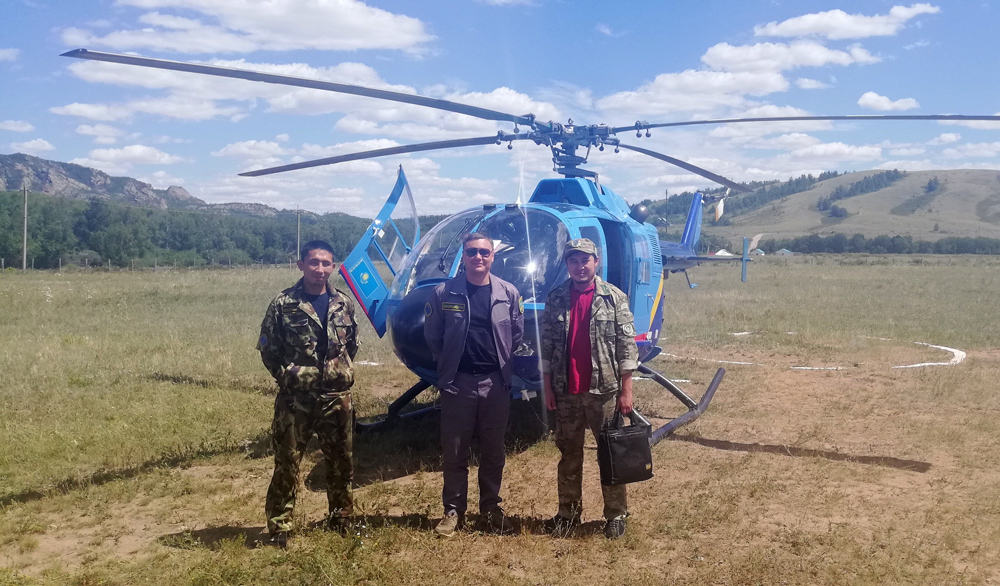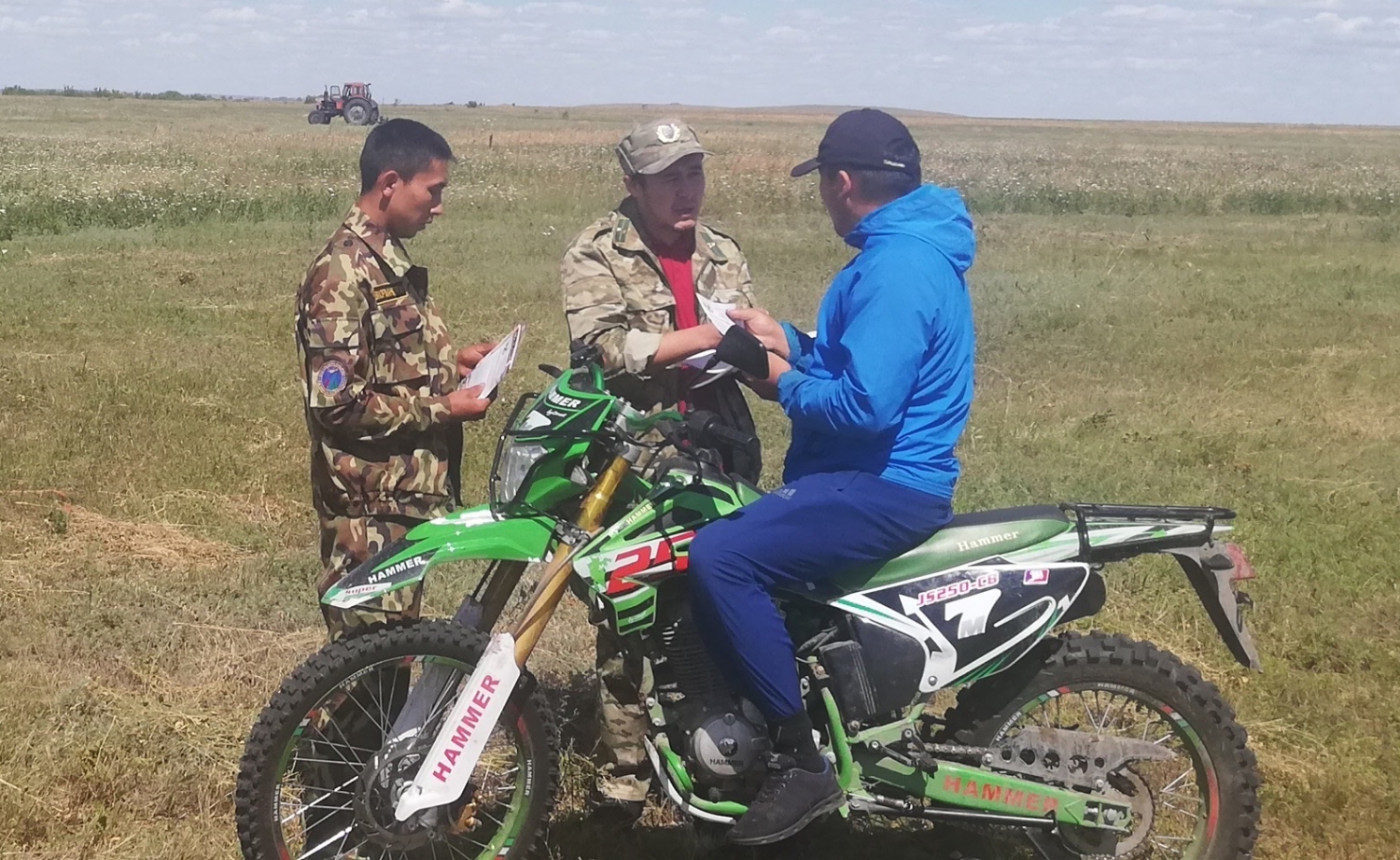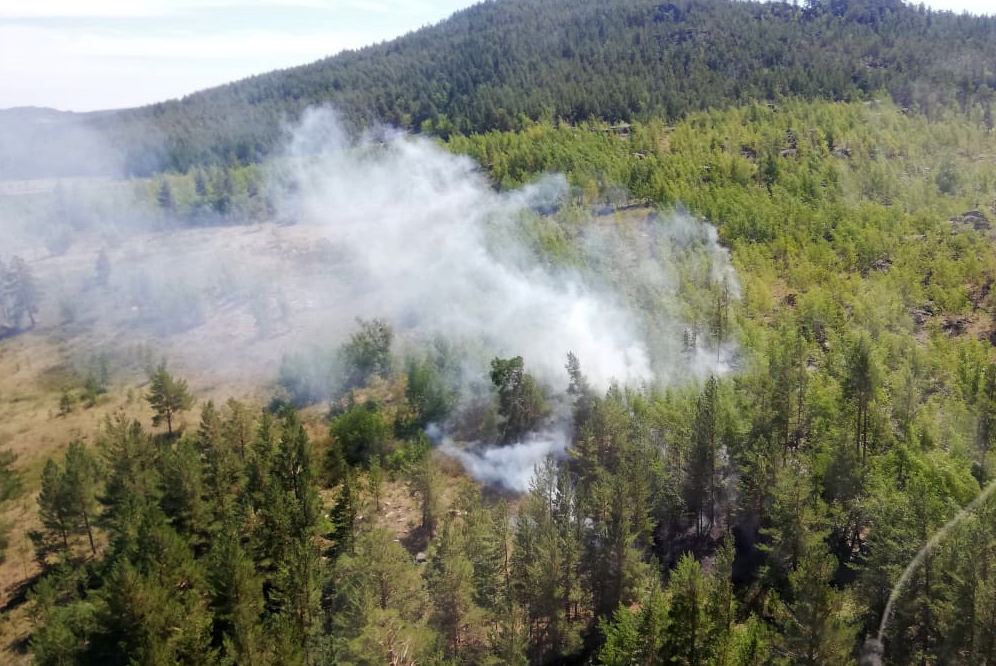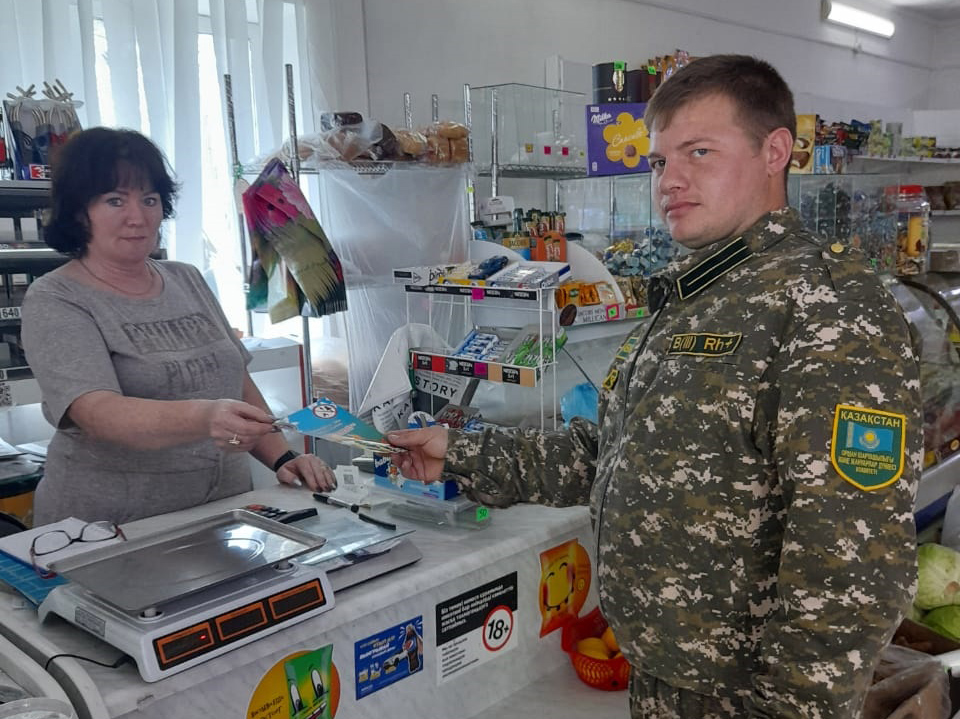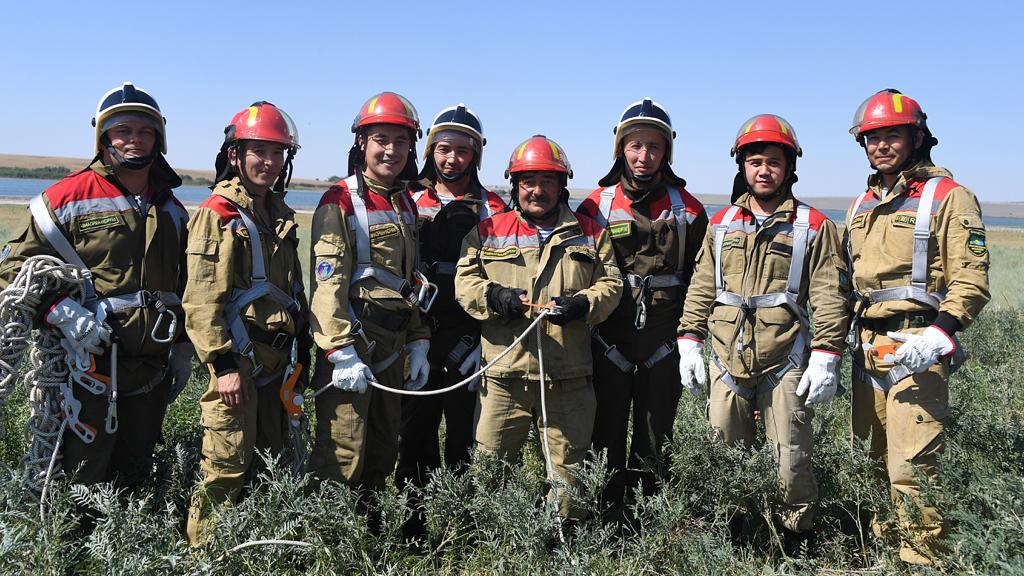 At the first stage of training, the personnel underwent ground training on the basis of a special training tower, with the aim of thorough and comprehensive training on the ground, working out all the elements of descent, studying various techniques and training on their implementation.
At the first stage of training, the personnel underwent ground training on the basis of a special training tower, with the aim of thorough and comprehensive training on the ground, working out all the elements of descent, studying various techniques and training on their implementation.
At the second stage of training, paratroopers-firefighters carried out descents from the MI-171 helicopter to the ground with the help of a special trigger device (SUR). Descents were carried out from a height of 10, 20, 30 and 40 meters. From such a height, paratroopers-firefighters have to work directly when extinguishing forest fires.
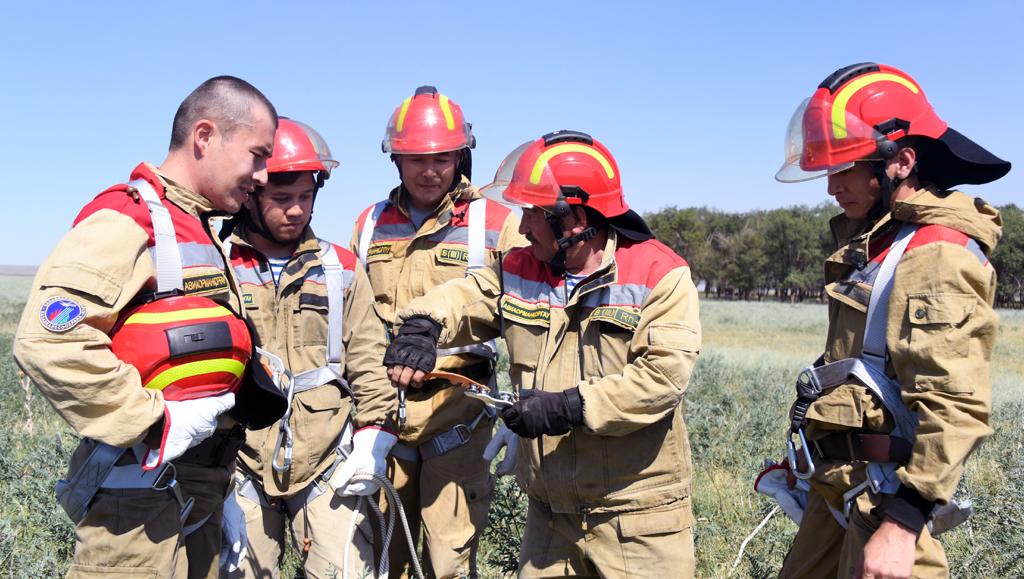 The helicopter can get as close to the ground as the tree crowns allow. Some paratroopers-firefighters have more than 70 helicopter descents behind them. The practical skills of the "forest special forces" were tested by the head of the APS, S.M. Polyakov.
The helicopter can get as close to the ground as the tree crowns allow. Some paratroopers-firefighters have more than 70 helicopter descents behind them. The practical skills of the "forest special forces" were tested by the head of the APS, S.M. Polyakov.
A DESCENT DEVICE is a device that allows people and cargo to be lowered to work sites from a helicopter hovering over a forest canopy or other natural object where helicopter landing is impossible.
 The first drum-type forest fire trigger device (SUB) for the delivery of people and fire-fighting cargo to forest fires in order to extinguish them was developed by the production and technical laboratory of the Central Aviation Forest Protection Base. The first descents from the Mi-4 helicopter were carried out in 1956.
The first drum-type forest fire trigger device (SUB) for the delivery of people and fire-fighting cargo to forest fires in order to extinguish them was developed by the production and technical laboratory of the Central Aviation Forest Protection Base. The first descents from the Mi-4 helicopter were carried out in 1956.
Later, in connection with the use of Mi-8 helicopters by air security, a roller-type trigger device (SUR) was developed and introduced in 1979. It allows for autonomous descent from a helicopter of a paratrooper-firefighter or cargo weighing up to 100 kg at a speed of up to 3 m/s.
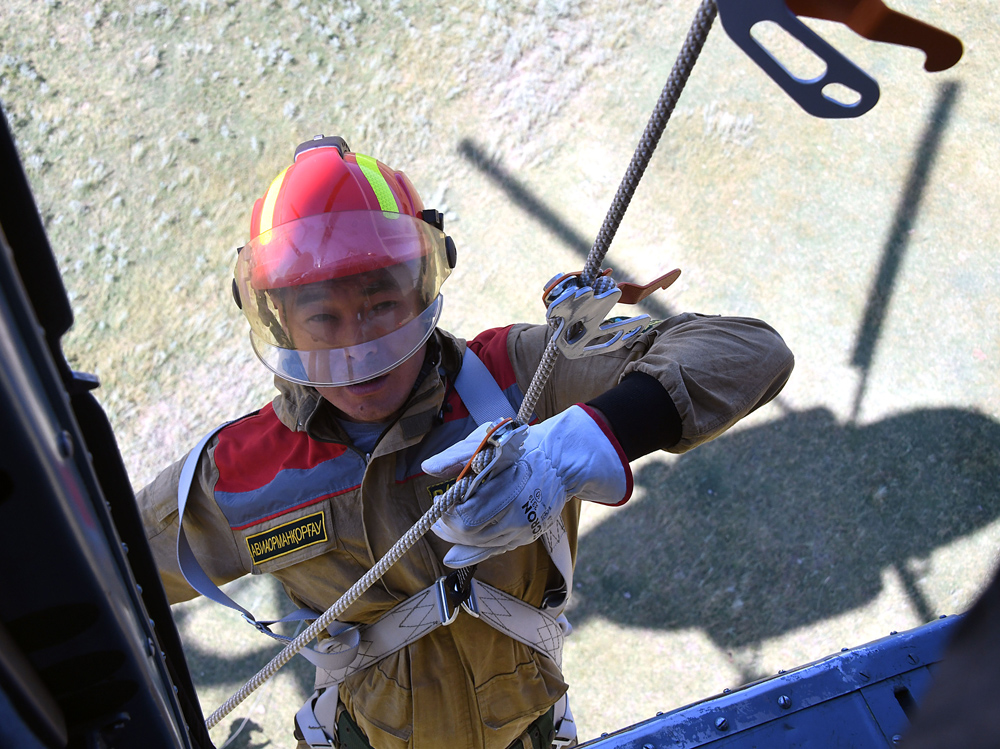 It should be noted that it is not always possible to get to the area of an active forest fire by land transport, and when delivering forces and means by aviation, it is necessary to pick up a platform for a safe landing. In such cases, it is decided to land troops in the area of the fire with the help of a helicopter. The pilot-observer from the air selects a platform suitable for the descent of paratroopers-firefighters, measuring at least 5x5 meters between the crowns of trees.
It should be noted that it is not always possible to get to the area of an active forest fire by land transport, and when delivering forces and means by aviation, it is necessary to pick up a platform for a safe landing. In such cases, it is decided to land troops in the area of the fire with the help of a helicopter. The pilot-observer from the air selects a platform suitable for the descent of paratroopers-firefighters, measuring at least 5x5 meters between the crowns of trees.
When making a decision to perform descents and choosing a place for descent, the issuing officer asks the helicopter commander "Allow me to prepare for descent." Having received the answer "I allow", he gives the command to the paratroopers-firefighters to "Get ready for descents" and puts on a safety belt or a safety suspension system. The carabiner of the safety halyard or cable is attached to the power unit in the helicopter. The helicopter hovers over this "well" at a height of at least 10 meters above the treetops (while the height to the ground should not exceed 45 meters).
 The observer pilot opens the door and drops a particularly strong (900 kg at break) 50-meter cord, along which, with the help of a roller trigger device, paratroopers-firefighters descend directly from the helicopter to the ground.
The observer pilot opens the door and drops a particularly strong (900 kg at break) 50-meter cord, along which, with the help of a roller trigger device, paratroopers-firefighters descend directly from the helicopter to the ground.
If the bay of the cord has dissolved and reached the ground, the person releasing the SPU reports to the helicopter commander: "the bay has been dropped, dissolved to the ground, allow the descent of the first" and, having received the answer: "I allow", gives the command to the first:"on the descent."
The senior of the group should be the first to descend, who, having descended, is obliged to insure the next descending paratroopers.
 After the descent of the first paratrooper-firefighter, he reports to the helicopter commander on the SPU: "The first landed, allow the descent of the second." Having received permission, the second paratrooper-firefighter descends, the descent is performed similarly to the first.
After the descent of the first paratrooper-firefighter, he reports to the helicopter commander on the SPU: "The first landed, allow the descent of the second." Having received permission, the second paratrooper-firefighter descends, the descent is performed similarly to the first.
After the end of the descent of the paratroopers-firefighters, the person releasing unhooks the cord carabiner from the earring and drops the cord down. The producer reports to the helicopter commander on the SPU: "The descents are finished, the cord is dropped, the door is closed."
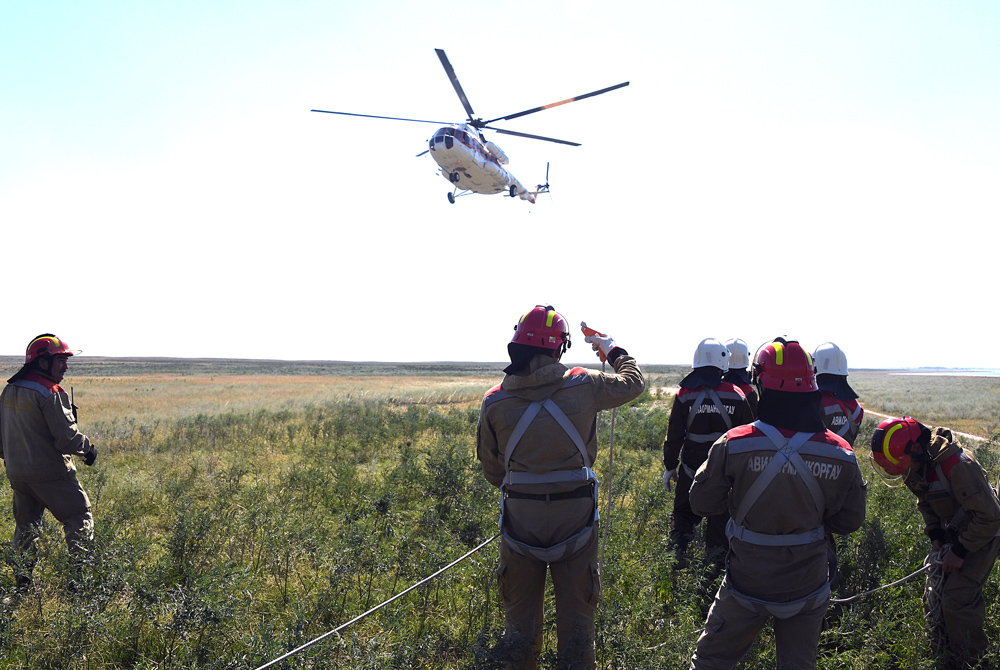 During the training, the interaction of the helicopter commander, the observer pilot and the paratroopers-firefighters, the descent speed (average - three meters per second), the correct landing and much more are monitored.
During the training, the interaction of the helicopter commander, the observer pilot and the paratroopers-firefighters, the descent speed (average - three meters per second), the correct landing and much more are monitored.
 On July 24, 2022, a fire was discovered on the territory of the 56 block of the Kurgan forestry of the Kenessky KSU. Paratroopers-firefighters of the Akmola aviation department and employees of the ground forest guard with equipment were sent to the place of the fire to extinguish the fire and prevent its further spread. Thanks to the coordinated actions of all services, the fire was localized and eliminated.
On July 24, 2022, a fire was discovered on the territory of the 56 block of the Kurgan forestry of the Kenessky KSU. Paratroopers-firefighters of the Akmola aviation department and employees of the ground forest guard with equipment were sent to the place of the fire to extinguish the fire and prevent its further spread. Thanks to the coordinated actions of all services, the fire was localized and eliminated.